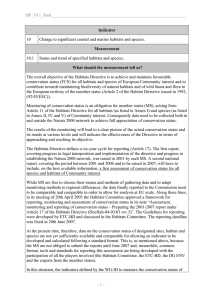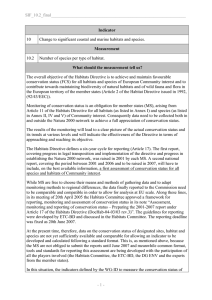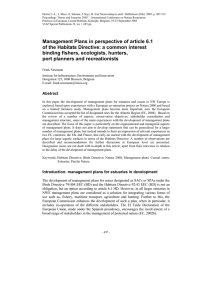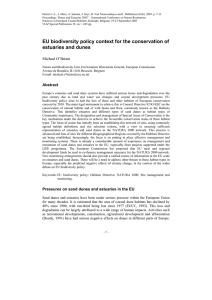SIF_9.1_final________________________________________________________________ 9 Effective management of designated sites. 9.1
advertisement
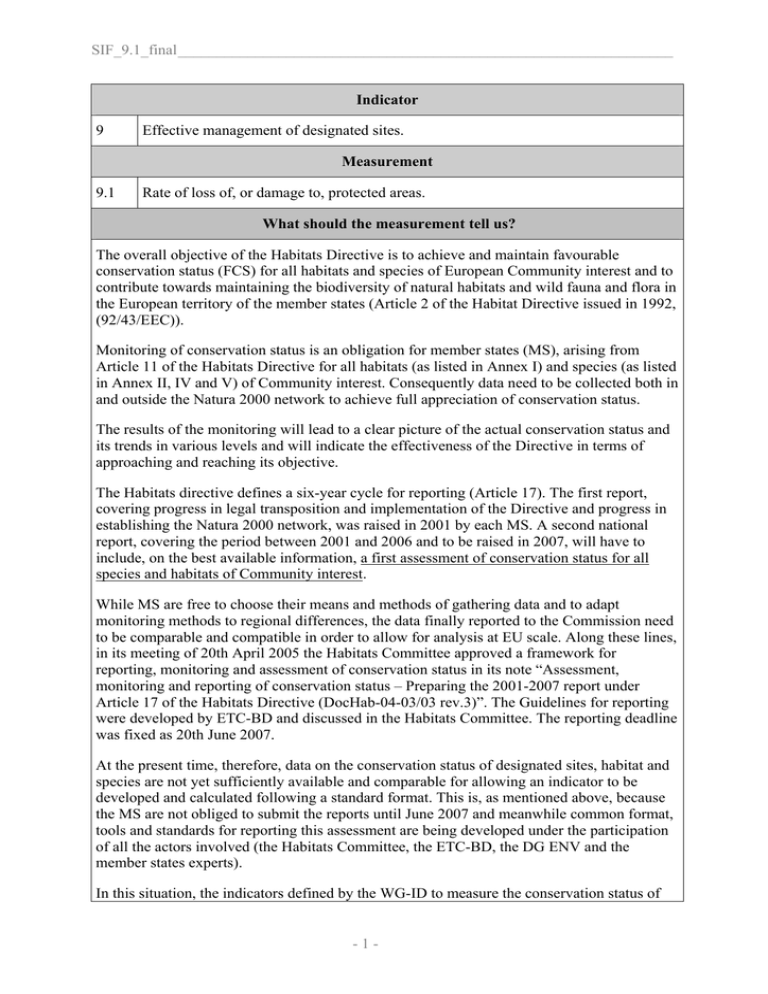
SIF_9.1_final________________________________________________________________ Indicator 9 Effective management of designated sites. Measurement 9.1 Rate of loss of, or damage to, protected areas. What should the measurement tell us? The overall objective of the Habitats Directive is to achieve and maintain favourable conservation status (FCS) for all habitats and species of European Community interest and to contribute towards maintaining the biodiversity of natural habitats and wild fauna and flora in the European territory of the member states (Article 2 of the Habitat Directive issued in 1992, (92/43/EEC)). Monitoring of conservation status is an obligation for member states (MS), arising from Article 11 of the Habitats Directive for all habitats (as listed in Annex I) and species (as listed in Annex II, IV and V) of Community interest. Consequently data need to be collected both in and outside the Natura 2000 network to achieve full appreciation of conservation status. The results of the monitoring will lead to a clear picture of the actual conservation status and its trends in various levels and will indicate the effectiveness of the Directive in terms of approaching and reaching its objective. The Habitats directive defines a six-year cycle for reporting (Article 17). The first report, covering progress in legal transposition and implementation of the Directive and progress in establishing the Natura 2000 network, was raised in 2001 by each MS. A second national report, covering the period between 2001 and 2006 and to be raised in 2007, will have to include, on the best available information, a first assessment of conservation status for all species and habitats of Community interest. While MS are free to choose their means and methods of gathering data and to adapt monitoring methods to regional differences, the data finally reported to the Commission need to be comparable and compatible in order to allow for analysis at EU scale. Along these lines, in its meeting of 20th April 2005 the Habitats Committee approved a framework for reporting, monitoring and assessment of conservation status in its note “Assessment, monitoring and reporting of conservation status – Preparing the 2001-2007 report under Article 17 of the Habitats Directive (DocHab-04-03/03 rev.3)”. The Guidelines for reporting were developed by ETC-BD and discussed in the Habitats Committee. The reporting deadline was fixed as 20th June 2007. At the present time, therefore, data on the conservation status of designated sites, habitat and species are not yet sufficiently available and comparable for allowing an indicator to be developed and calculated following a standard format. This is, as mentioned above, because the MS are not obliged to submit the reports until June 2007 and meanwhile common format, tools and standards for reporting this assessment are being developed under the participation of all the actors involved (the Habitats Committee, the ETC-BD, the DG ENV and the member states experts). In this situation, the indicators defined by the WG-ID to measure the conservation status of -1- SIF_9.1_final________________________________________________________________ designated sites, habitats and species (indicators 9 and 10 and corresponding measurements) might need to be reformulated when the European Commission reviews the national reports submitted by the MS and establishes a standard reporting format. The Deduce project therefore considers that it is not worth testing the indicators mentioned above until the national reports of the Habitats Directive are approved and standard assessment reports are defined by the European Commission. Parameters Coverage Spatial Temporal Data sources Methodology Steps Products Presentation of the data Adding value to the data Aggregation and disaggregation Notes -2-



